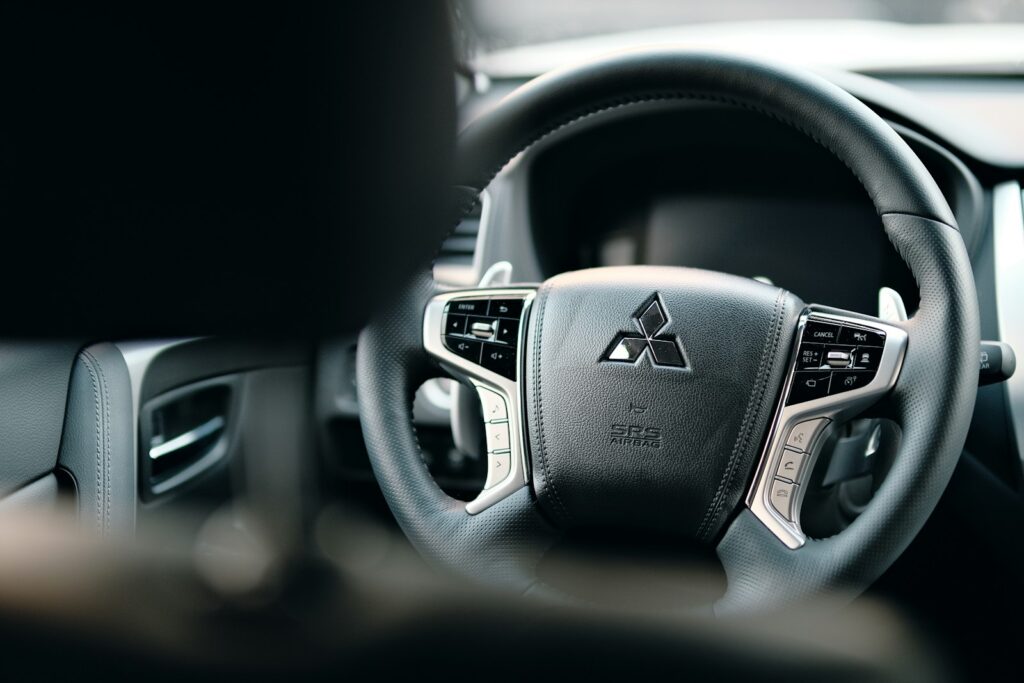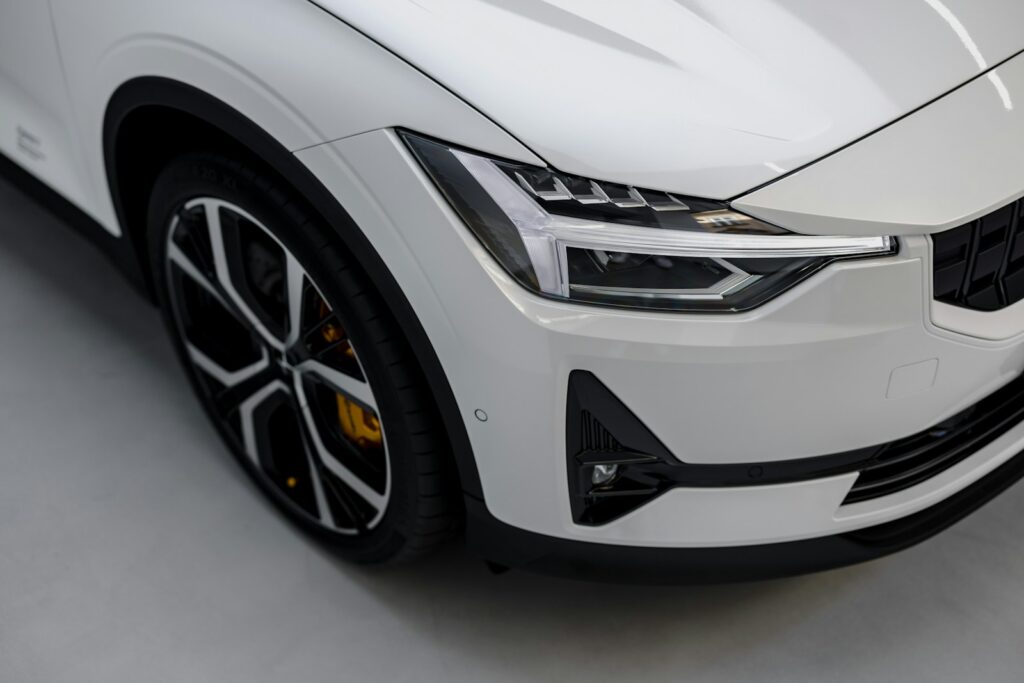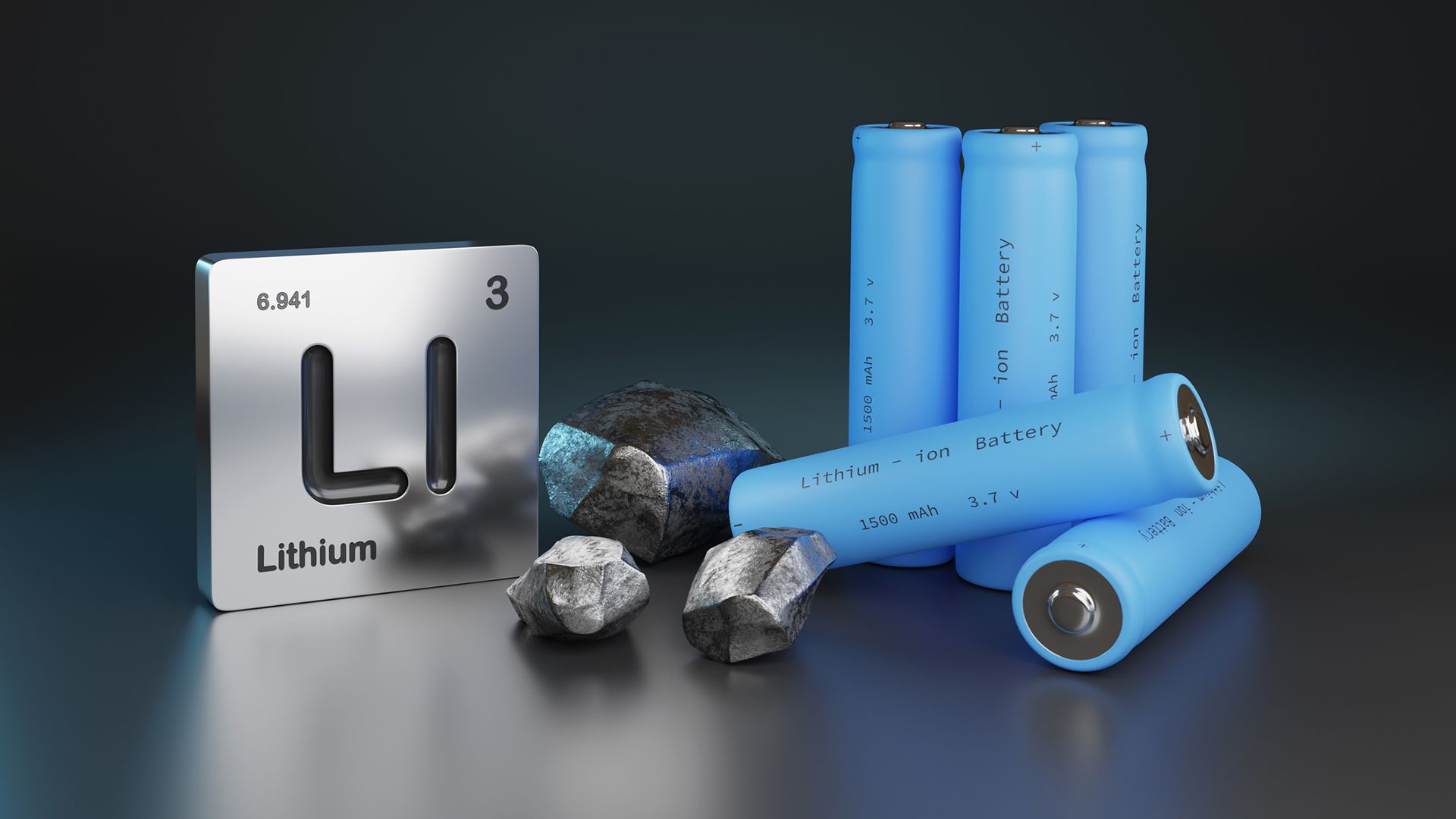
The automotive industry, a colossal force that drives global economies and shapes daily life, has long been celebrated for its relentless innovation and technological marvels. From the groundbreaking assembly lines of Henry Ford to the sleek, intelligent vehicles of today, the journey has been one of constant progress. Yet, beneath this polished veneer of engineering prowess and marketing dazzle, lies a history riddled with corporate scandals and ethical compromises—a “dark side” where profit motives too often overshadowed public safety and environmental responsibility. These are not merely isolated incidents but systemic issues that have, at various points, cost lives, eroded consumer trust, and necessitated sweeping regulatory overhauls.
This industry, born from humble beginnings, rapidly expanded its global footprint, fostering fierce competition among powerhouses from America, Germany, and Japan. While this competition fueled technological advancement, it also created immense pressure to cut costs, leading, on occasion, to questionable practices and a willingness to conceal known defects. The ripple effects of such decisions have been profound, extending from individual consumer tragedies to international financial markets and regulatory frameworks.
In this deep dive, we pull back the curtain on some of the most notorious corporate scandals and deeply ingrained malpractices within the automotive sector. We will explore how manufacturers, driven by a relentless pursuit of financial gain, made decisions that put millions at risk, manipulated environmental data, and systematically undermined the trust placed in them. Prepare to journey through the untold stories of deception, the devastating consequences, and the enduring lessons that continue to shape the industry’s path forward.
1. **Early Industry Malpractices: The Cost of Prioritizing Profit**The genesis of the automotive industry’s darker side often traces back to its foundational years, when the rapid growth and global expansion laid the groundwork for ethical compromises. As vehicles transformed from luxury items to common necessities, the pressure to dominate markets intensified. This era saw companies, in their fervent pursuit of economic leadership, sometimes prioritize their balance sheets over the well-being of their customers. This mentality wasn’t an anomaly but a recurring theme that would foreshadow many of the major scandals to come.
Instances of cutting corners on safety and regulatory compliance frequently cast shadows over the industry’s achievements. Companies, eager to rush products to market or maintain profit margins, sometimes did so without adequate testing. Even more disturbing, there were cases where known defects were concealed to avoid costly recalls, demonstrating a clear pattern where the financial implications of a fix were weighed against the potential—and often tragic—consequences for consumers.
The global reach of the auto industry only amplified these issues. With manufacturers expanding rapidly across borders, creating enormous wealth, the stage was inadvertently set for a series of ethical compromises. As competition from Japanese and European markets intensified, the pressure to reduce costs became even more acute for American manufacturers. This competitive landscape, while driving innovation in many respects, also unfortunately fueled a climate where prioritizing profits over public safety became a deeply ingrained, and often unacknowledged, aspect of corporate strategy.

2. **Ford Pinto Case: Negligent Homicide Indictment**Among the most infamous chapters in automotive corporate malfeasance is the saga of the Ford Pinto. Introduced in 1971, the Pinto was Ford’s answer to the rising tide of fuel-efficient auto imports, and it initially enjoyed tremendous success, selling over 328,000 cars in its first year. However, beneath its promising exterior lay a deadly design flaw that would expose a horrifying corporate decision-making process, vividly demonstrating that for Ford, the bottom line far outweighed human lives.
Before the Pinto even rolled off the assembly line, internal testing revealed a catastrophic flaw: in a rear-end collision, the car’s fuel tank was prone to rupturing, spraying highly flammable fuel into the back seat, leading to devastating fires. What makes this scandal particularly egregious is that Ford was fully aware of this defect. A leaked 1973 memo chillingly detailed the company’s cost-benefit analysis, revealing that it would be cheaper to pay out lawsuits for anticipated deaths and injuries—estimated at $49.5 million—than to implement a $12 per car fix, which would have cost $137 million.
The public outrage reached a fever pitch after a 1977 *Mother Jones* exposé unequivocally proved Ford’s pre-production knowledge of the defect. Facing immense pressure and a rallying public, Ford eventually recalled all 1.5 million Pintos (and the Mercury Bobcat twin) by 1978 to make the necessary repairs. The company’s cold calculus, however, proved terribly wrong. With estimates of 900 deaths and numerous injuries tied to the defect, Ford ended up paying hundreds of millions in lawsuits, far exceeding their initial projections. In an unprecedented move, Ford was even indicted for negligent homicide in 1978 following the deaths of three teenage girls, though the company was ultimately acquitted. The Pinto remains a stark symbol of corporate indifference to human life.
Car Model Information: 1980 Ford Pinto WAGON
Name: Ford Pinto
Caption: Ford Pinto
Manufacturer: Ford Motor Company
Aka: Mercury Bobcat
Production: September 1970 – July 1980
ModelYears: 1971–1980 (Pinto),1974–1980 (Bobcat)
Assembly: Edison, New Jersey,Milpitas, California
Designer: Robert Eidschun (1968)
Class: Subcompact car
BodyStyle: Sedan (automobile),sedan delivery,station wagon,hatchback
Related: #Mercury Bobcat (1974–1980),Ford Mustang (second generation)
Layout: Front-engine, rear-wheel-drive layout
Chassis: Unibody
Engine: unbulleted list
Abbr: on
Disp: Ford Cologne engine
Transmission: unbulleted list
Wheelbase: 94.0 in
Length: 163 in
Width: 69.4 in
Height: 50 in
Weight: convert
Predecessor: Ford Cortina#Mark II (1966–1970)
Successor: Ford Escort (North America)
Categories: 1980s cars, Articles with short description, Cars discontinued in 1980, Cars introduced in 1970, Commons category link from Wikidata
Summary: The Ford Pinto is a subcompact car that was manufactured and marketed by Ford Motor Company in North America from 1970 until 1980. The Pinto was the first subcompact vehicle produced by Ford in North America.
The Pinto was marketed in three body styles throughout its production: a two-door fastback sedan with a trunk, a three-door hatchback, and a two-door station wagon. Mercury offered rebadged versions of the Pinto as the Mercury Bobcat from 1975 until 1980 (1974–1980 in Canada). Over three million Pintos were produced over its ten-year production run, outproducing the combined totals of its domestic rivals, the Chevrolet Vega and the AMC Gremlin. The Pinto and Mercury Bobcat were produced at Edison Assembly in Edison, New Jersey, St. Thomas Assembly in Southwold, Ontario, and San Jose Assembly in Milpitas, California.
Since the 1970s, the safety reputation of the Pinto has generated controversy. Its fuel-tank design attracted both media and government scrutiny after several deadly fires occurred when the tanks ruptured in rear-end collisions. A subsequent analysis of the overall safety of the Pinto suggested it was comparable to other 1970s subcompact cars. The safety issues surrounding the Pinto and the subsequent response by Ford have been cited widely as business ethics and tort reform case studies.
Get more information about: Ford Pinto
Buying a high-performing used car >>>
Brand: Ford Model: Pinto
Price: $5,951 Mileage: 107,000 mi.

3. **Ford Explorer/Firestone Tire Failures: Deadly Design Flaws**The Ford Motor Company, seemingly unable to escape its pattern of safety controversies, faced another major scandal with the Explorer/Firestone tire failures, which tragically caused numerous rollovers and fatalities. This incident, unfolding in the late 1990s and early 2000s, involved a lethal combination of a popular SUV’s design and defective tires, leading to devastating accidents that once again highlighted the critical dangers of prioritizing speed to market and cost-cutting over rigorous safety testing and transparent communication.
At the heart of the crisis was the Ford Explorer, a top-selling SUV, often fitted with Firestone Wilderness AT tires. Investigations and lawsuits revealed that these tires were prone to tread separation, particularly when underinflated or driven at high speeds and temperatures. When a tire failed, the Explorer, with its relatively high center of gravity, was susceptible to rolling over, turning a tire defect into a potentially fatal accident. The sheer volume of accidents, injuries, and deaths quickly drew intense public and regulatory scrutiny, forcing both companies to confront a crisis of monumental proportions.
The unfolding scandal was complicated by a bitter public dispute between Ford and Firestone, each blaming the other. Ford argued the tires were defective, while Firestone pointed to the Explorer’s design and Ford’s recommended tire pressure, which was lower than optimal for the tires. This public spat further eroded consumer trust, as victims and the public watched two corporate giants shift blame rather than taking immediate collective responsibility. Ultimately, millions of tires were recalled, and both companies suffered significant financial and reputational damage, serving as a grim reminder of how critical the collaboration and shared responsibility for safety are across the entire automotive supply chain.
Car Model Information: 2023 Ford Explorer Limited
Name: Ford Explorer
Caption: Sixth-generation Ford Explorer
Manufacturer: Ford Motor Company
Production: 1990–present
ModelYears: 1991–present
Class: unbulleted list
Chassis: unbulleted list
Predecessor: Ford Bronco II
Successor: Ford Territory (Australia)
Categories: 2000s cars, 2010s cars, 2020s cars, All-wheel-drive vehicles, All Wikipedia articles in need of updating
Summary: The Ford Explorer is a range of SUVs manufactured by the Ford Motor Company since the 1991 model year. The first five-door SUV produced by Ford, the Explorer, was introduced as a replacement for the three-door Bronco II. As with the Ford Ranger, the model line derives its name from a trim package previously offered on Ford F-Series pickup trucks. As of 2020, the Explorer became the best-selling SUV in the American market.
Currently in its sixth generation, the Explorer has featured a five-door wagon body style since its 1991 introduction. During the first two generations, the model line included a three-door wagon (directly replacing the Bronco II). The Ford Explorer Sport Trac is a crew-cab mid-size pickup derived from the second-generation Explorer. The fifth and sixth generations of the Explorer have been produced as the Ford Police Interceptor Utility (replacing both the Ford Crown Victoria Police Interceptor and the Ford Police Interceptor Sedan).
The Explorer is slotted between the Ford Edge and Ford Expedition within North America’s current Ford SUV range. The model line has undergone rebadging several times, with Mazda, Mercury, and Lincoln each selling derivative variants. Currently, Lincoln markets a luxury version of the Explorer as the Lincoln Aviator.
For the North American market, the first four generations of the Explorer were produced by Ford at its Louisville Assembly Plant (Louisville, Kentucky) and its now-closed St. Louis Assembly Plant (Hazelwood, Missouri). Ford currently assembles the Explorer alongside the Lincoln Aviator and the Police Interceptor Utility at its Chicago Assembly Plant (Chicago, Illinois).
Get more information about: Ford Explorer
Buying a high-performing used car >>>
Brand: Ford Model: Explorer
Price: $28,999 Mileage: 38,525 mi.

4. **General Motors’ Ignition Switch Scandal**The General Motors (GM) ignition switch scandal stands as a chilling modern example of corporate negligence and cover-up, revealing how a major automaker knowingly hid a deadly defect for over a decade. Between 2003 and 2014, GM produced millions of vehicles with faulty ignition switches that possessed a critical design flaw: they could unexpectedly shift from the “run” position to “accessory” or “off” while the car was in motion. This seemingly minor defect had catastrophic consequences, disabling airbags, power steering, and power brakes, thereby leaving drivers without crucial safety systems.
What truly appalled the public and regulators was the revelation that GM was aware of this dangerous problem as early as 2001. Internal documents laid bare a corporate culture that systematically downplayed and obscured the issue, classifying it as a “customer convenience” problem rather than a life-threatening safety concern. This deliberate misclassification allowed the company to avoid expensive recalls, but at a horrifying cost: the defect was ultimately linked to at least 124 deaths and 275 injuries across a range of GM models, including Pontiac and Saturn vehicles, even after those brands were discontinued.
In 2014, under intense pressure from federal investigations and mounting public outcry, GM finally issued a massive recall encompassing 2.6 million vehicles. The financial repercussions were staggering: the company paid $900 million to settle a criminal investigation and established a compensation fund exceeding $600 million for victims and their families. The scandal not only resulted in severe financial penalties but also led to criminal charges against individual executives. This deeply disturbing episode underscored the profound ethical failures within GM’s leadership, exposing how internal bureaucratic processes and a fear of financial liability could trump the moral imperative to protect human lives.
Read more about: More Than Just a Chassis: Uncovering 11 Catastrophic Design Flaws That Defined Automotive Infamy

5. **Volkswagen’s Dieselgate**In 2015, the automotive world was rocked by “Dieselgate,” the Volkswagen emissions scandal that unveiled a sophisticated, deliberate scheme to cheat environmental regulations. This controversy, widely recognized as the largest automobile scandal in history, exposed how one of the world’s leading automakers engaged in systematic deception, prioritizing corporate growth and market dominance over environmental responsibility and public health. It wasn’t merely a mistake; it was a calculated fraud that profoundly damaged consumer trust and reshaped global regulatory landscapes.
At the heart of the scandal was the installation of “defeat devices”—specialized software—in approximately 11 million diesel vehicles worldwide. These devices were designed to detect when the vehicles were undergoing official emissions tests and would temporarily alter engine performance to produce compliant levels of nitrogen oxides (NOx). However, in real-world driving conditions, these same vehicles would emit up to 40 times the legal limit of NOx, a harmful pollutant linked to respiratory diseases and smog formation. Volkswagen had marketed these “clean diesel” vehicles as environmentally friendly, creating a stark contrast between advertised performance and actual ecological impact.
The fallout from Dieselgate was immense and far-reaching. Volkswagen faced fines and settlements exceeding $30 billion globally, along with criminal charges against multiple executives, some of whom were jailed. CEO Martin Winterkorn resigned in disgrace, and the company’s stock plummeted by nearly 40%. Beyond the financial devastation, VW’s brand reputation suffered immense, long-term damage, forcing a radical corporate restructuring and an accelerated pivot toward electric vehicles. The scandal not only prompted stricter emissions testing worldwide but also served as a case study in failed leadership ethics, revealing a corporate culture that prioritized aggressive growth over fundamental compliance.

6. **Mitsubishi’s False Data Submission**Hot on the heels of the Dieselgate revelations, another major Japanese automaker, Mitsubishi Motors, admitted in 2016 to a startling confession: falsifying fuel efficiency data for over 625,000 vehicles. This scandal, while perhaps not as globally recognized as Volkswagen’s, nevertheless exposed a deeply entrenched culture of deception within the company, demonstrating a widespread industry problem rather than just isolated incidents. It highlighted how intense internal pressure to meet ambitious targets could lead engineers and management to openly manipulate critical consumer information.
The deception at Mitsubishi was not a recent development but had spanned an astonishing 25 years. Engineers had systematically used improper testing methods, specifically the “coast-down” method, to calculate tire rolling resistance and aerodynamic drag, thereby artificially inflating fuel economy figures. The goal was to meet increasingly stringent standards and present more competitive fuel efficiency ratings to consumers than drivers would actually experience. The scandal primarily affected models sold in Japan, including vehicles manufactured for Nissan, which was consequently dragged into the reputational fallout.
The financial repercussions for Mitsubishi were severe. The company’s stock value dropped by a staggering 50% following the admission of guilt, pushing the automaker to the brink of collapse. The crisis was so profound that Nissan ultimately stepped in, purchasing a controlling stake in the struggling company, a move that fundamentally reshaped Mitsubishi’s corporate structure. Internal investigations uncovered systemic problems within Mitsubishi’s corporate culture, where management knowledge of and pressure for falsified results underscored a profound ethical lapse. This episode served as a stark reminder of the pervasive risks when financial pressures override ethical conduct and transparency in the competitive automotive market.
The automotive industry, a colossal force that drives global economies and shapes daily life, has been celebrated for its relentless innovation. Our journey in the first section unveiled some of the industry’s most egregious ethical lapses, from deadly design flaws like the Ford Pinto to sophisticated emissions deception in the Volkswagen Dieselgate scandal. But to truly understand the “dark side” of this multi-trillion-dollar machine, we must delve deeper into its hidden operational practices. Beyond high-profile recalls and corporate penalties, there lies a more insidious landscape of exploitative tactics, meticulously designed to maximize profits at the expense of unsuspecting consumers. These are the underlying mechanisms that quietly erode trust and ensure continuous revenue streams, encompassing products engineered for premature failure, inflated maintenance costs, and misleading consumer data.

7. **Planned Obsolescence: Designed to Fail**The concept of planned obsolescence, while seemingly a relic, remains a deeply ingrained strategy within the automotive industry. It’s not merely about products wearing out; it’s a deliberate engineering and business decision ensuring components or entire vehicles become outdated or break down after a predetermined period. This planned cycle forces customers into continuous expenditure on repairs or, more profitably for the manufacturer, the purchase of new models, underpinning significant industry revenue.
Manufacturers achieve this through subtle yet effective tactics. A primary method involves strategic use of inferior materials in critical components, chosen to be more prone to wear and tear than durable counterparts. While initial production cost savings per unit might be marginal, the cumulative effect across millions of vehicles sold translates into a highly profitable stream of revenue from inevitable replacements and repairs. This financially astute move prioritizes future sales over long-term product integrity.
Modern vehicle technology further aids planned obsolescence, particularly through software. Many contemporary cars incorporate complex software systems with potential “lockouts,” where crucial features or optimal performance can degrade. This might occur via updates that reduce efficiency or limit functionality unless a subscription or premium package is purchased. Essential capabilities are thus held hostage, compelling owners to pay more to unlock what they believed they already owned, transforming a one-time purchase into a recurring revenue model.
Warranty periods are meticulously crafted to serve this strategy, typically designed to expire just before common failures or significant wear-and-tear issues are statistically predicted to manifest. This leaves the unsuspecting owner to bear the full financial burden of repairs, often just as the vehicle transitions from its initial robust period to an age where maintenance becomes more frequent and costly. This tuned economic cycle ensures manufacturer liability ends precisely when the customer’s financial burden begins, maintaining a constant flow of business back to dealerships and parts suppliers.

8. **Overpriced Replacement Parts and Repairs**The true cost of vehicle ownership often becomes glaringly apparent once a car exits its warranty period, as repair expenses can skyrocket. This isn’t solely a consequence of aging parts; it’s frequently a direct result of manufacturers intentionally limiting component availability. Designating crucial parts as exclusive to authorized dealerships effectively creates a controlled monopoly, compelling consumers to pay a substantial premium for necessary repairs and transforming routine maintenance into a significant financial drain.
This practice is widespread, with markups on common parts reaching astronomical levels. A set of brake pads, for instance, might have a production cost of $20 but sell at a dealership for $200 (900% markup). Air filters, costing $5 to produce, frequently retail for $50 (1000% increase). Even complex components like an infotainment system screen, with a $150 production cost, can be priced at $1,500 by dealerships, illustrating immense profit margins.
Predatory tactics extend beyond pricing. Many manufacturers utilize proprietary diagnostic tools and intricate software codes, often inaccessible to independent repair shops. This technical lockout funnels vehicle owners back to authorized dealerships for diagnostics or minor repairs, inflating costs due to higher labor rates and exclusive part sourcing. Furthermore, increasing numbers of crucial repairs necessitate specific software updates meticulously locked behind dealership-exclusive services, cementing their control over the post-purchase maintenance lifecycle.
For consumers determined to mitigate these exorbitant costs, unwavering vigilance and proactive measures are essential. Seeking independent mechanics specializing in specific car brands can provide more affordable and equally competent alternatives. Exploring the robust market for aftermarket parts, often meeting or exceeding OEM quality at a fraction of the cost, is another intelligent strategy. Empowering oneself with knowledge and utilizing open-source diagnostic tools, where available, helps avoid unnecessary dealership visits, reclaiming control over vehicle maintenance expenses.
Read more about: More Than Skin Deep: 14 Great-Looking Vintage and Iconic Cars Mechanics Couldn’t Stand Fixing

9. **Fake Fuel Efficiency Ratings**The allure of high fuel efficiency is a powerful selling point, frequently swaying consumer purchasing decisions. However, car manufacturers have often faced accusations of advertising misleading figures that fail to reflect real-world driving conditions. These widely publicized ratings are typically generated under meticulously controlled laboratory tests, which inherently produce results far superior to what an average driver will ever experience, leading to significant and frustrating discrepancies.
To achieve impressive, yet unrealistic, figures during official testing, manufacturers employ clever techniques designed to artificially enhance performance. A common strategy involves equipping test vehicles with specialized tires boasting extremely low rolling resistance, almost never included in consumer versions. Another tactic entails stripping vehicles of non-essential weight to artificially boost efficiency during controlled test cycles. Moreover, tests are invariably conducted in perfectly flat, climate-controlled environments, devoid of wind resistance, varying road conditions, and diverse traffic scenarios.
The real-world consequences of these inflated ratings have led to significant public backlash and legal action. Ford’s C-Max hybrid, advertised with an impressive 47 MPG, consistently delivered only around 37 MPG in actual driving. This discrepancy resulted in a class-action lawsuit and compensation claims. Similarly, Hyundai and Kia faced hefty fines from regulatory bodies for systematically overstating fuel economy across several models, demonstrating a pervasive pattern of deceptive marketing.
To effectively protect themselves, consumers are increasingly advised to look beyond official EPA or equivalent regulatory ratings. It is highly beneficial to consult independent review sites and automotive publications, which frequently publish their own rigorous real-world MPG tests, offering a more accurate picture. Additionally, reviewing long-term owner reports and actively considering one’s personal driving conditions—typical terrain, traffic density, and average speeds—can offer a realistic expectation of a car’s true efficiency, empowering buyers to avoid costly surprises.
Read more about: A Comprehensive Review of Facebook: Tracing Its Evolution, Features, Controversies, and Enduring Global Impact

10. **Hidden Fees and Dealer Scams**The journey of purchasing a new or used vehicle is often fraught with complexities, and navigating car dealerships can feel akin to traversing a minefield. Dealerships have a long-standing reputation for introducing an array of hidden fees and last-minute charges that significantly inflate the final cost. These surcharges are artfully disguised as essential administrative costs or mandatory services, but often represent pure profit for the dealership, quietly adding hundreds or thousands to the price tag. Consumers, under pressure to close a deal, can easily fall prey to these deceptive tactics.
One of the most pervasive examples is the “Documentation Fee,” or “Doc Fee,” ranging from $100 to an exorbitant $500. This purports to cover paperwork processing, like title transfers. While some administrative cost is legitimate, these fees are frequently inflated far beyond actual expenses, serving as a significant profit center. The true cost of printing and filing documents is negligible, and many states attempt to regulate maximum amounts, but they remain a point of contention.
Beyond documentation fees, dealerships introduce other questionable charges. These include nebulous “preparation fees” for cleaning a car that should already be pristine, or “delivery fees” for a vehicle already on the lot. Even more dubious are “etching fees” for applying a VIN number to windows—a service of questionable security value and almost always dramatically overpriced. The goal is to present these as non-negotiable elements, seamlessly embedding them into the final price without clear justification, thereby clouding the vehicle’s true cost.
The ultimate defense against these insidious hidden costs lies in unwavering vigilance and a firm willingness to meticulously negotiate every line item. Consumers must be proactive, reviewing all paperwork and questioning every fee not explicitly the advertised price or a government-mandated tax/registration. Demanding a detailed breakdown and challenging vague charges can lead to their removal. Being prepared to confidently walk away if hidden fees are excessive or non-negotiable is a powerful bargaining tool, essential for protecting one’s financial interests.
Read more about: As a Car Expert, Here Are 14 Compelling Reasons I’d Never Buy a Used Car from a Dealership

11. **Carlos Ghosn and the Fall of a Mogul**While many auto industry scandals center on vehicle design or emissions, the “dark side” also profoundly encompasses the dramatic downfalls of powerful leaders. Few cases illustrate this more vividly than Carlos Ghosn, once hailed as a titan of the global automotive world. His spectacular story serves as a chilling reminder of how unchecked executive power and blurred ethical boundaries can lead even revered leaders to a fall from grace, inflicting immense damage upon the companies they once led.
Ghosn’s early career was marked by extraordinary achievements; he was credited as the transformative savior of Nissan, orchestrating a remarkable turnaround in the early 2000s. His aggressive cost-cutting and strategic vision rescued Nissan and led to the formidable Renault-Nissan-Mitsubishi alliance, propelling him to global prominence. For years, he was perceived as a visionary, uniquely capable of uniting corporate cultures and driving unprecedented growth.
However, his illustrious career crashed swiftly in November 2018, when Japanese authorities arrested him on serious allegations. These included systematically underreporting personal income and egregious misuse of company assets for lavish personal gain. This shocking revelation starkly exposed a profound contrast between his public image as a shrewd corporate savior and the troubling reality of his alleged private dealings, unveiling a significant ethical breach that sent seismic shockwaves globally.
The saga took an even more dramatic turn in late 2019 when Ghosn, under strict bail conditions, orchestrated an audacious escape from Japan. Famously, he evaded authorities by hiding inside a large musical equipment box, fleeing to Lebanon. He has consistently maintained his innocence, claiming he was the victim of a politically motivated corporate coup by Nissan executives opposing further alliance integration. This episode powerfully underscored how a single executive’s actions, particularly at the apex of corporate power, can have catastrophic repercussions, profoundly impacting an entire organization’s credibility and financial stability.
From the pioneering days of mass production to the cutting-edge frontiers of electric vehicles and autonomous driving, the automotive industry has consistently defined and redefined our world. Yet, as this comprehensive journey through its “dark side” unequivocally reveals, this relentless march of progress has been, far too frequently, marred by a troubling pattern of ethical compromises, profit-driven deceptions, and profound leadership failures. Whether these involve prioritizing cost-cutting over fundamental safety, meticulously designing products for premature failure, or misleading consumers with an insidious blend of hidden fees and false performance data, the lessons are stark and undeniable. For the industry to truly transcend its troubled past and embark upon a future characterized by genuine integrity and sustained success, it must embrace unwavering transparency, implement robust ethical governance at every level, and commit unreservedly to the well-being of its customers, its employees, and the global environment. Only through such fundamental shifts can it begin to rebuild the trust that has been so frequently shattered and, in doing so, finally live up to its immense potential as a truly responsible and positive force for global change.




